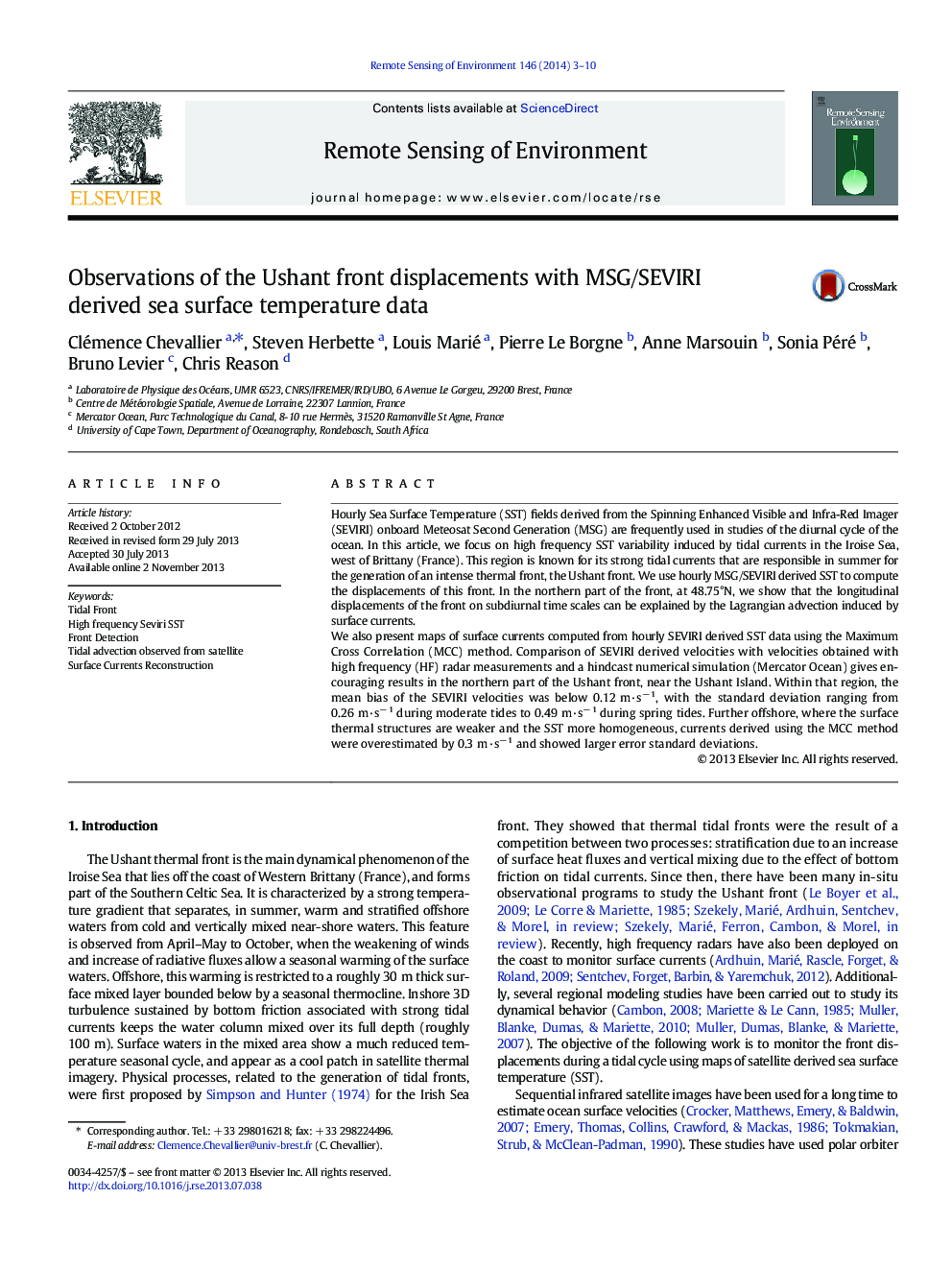| Article ID | Journal | Published Year | Pages | File Type |
|---|---|---|---|---|
| 6346673 | Remote Sensing of Environment | 2014 | 8 Pages |
â¢Ushant front high frequency variability is studied with SEVIRI derived SST.â¢SEVIRI derived front displacements correspond to advection by tidal currents.â¢SEVIRI SST derived velocities using MCC method are compared to HF radar measurements.â¢Results are encouraging where surface thermal structures are significant.
Hourly Sea Surface Temperature (SST) fields derived from the Spinning Enhanced Visible and Infra-Red Imager (SEVIRI) onboard Meteosat Second Generation (MSG) are frequently used in studies of the diurnal cycle of the ocean. In this article, we focus on high frequency SST variability induced by tidal currents in the Iroise Sea, west of Brittany (France). This region is known for its strong tidal currents that are responsible in summer for the generation of an intense thermal front, the Ushant front. We use hourly MSG/SEVIRI derived SST to compute the displacements of this front. In the northern part of the front, at 48.75°N, we show that the longitudinal displacements of the front on subdiurnal time scales can be explained by the Lagrangian advection induced by surface currents.We also present maps of surface currents computed from hourly SEVIRI derived SST data using the Maximum Cross Correlation (MCC) method. Comparison of SEVIRI derived velocities with velocities obtained with high frequency (HF) radar measurements and a hindcast numerical simulation (Mercator Ocean) gives encouraging results in the northern part of the Ushant front, near the Ushant Island. Within that region, the mean bias of the SEVIRI velocities was below 0.12 m·sâ 1, with the standard deviation ranging from 0.26 m·sâ 1 during moderate tides to 0.49 m·sâ 1 during spring tides. Further offshore, where the surface thermal structures are weaker and the SST more homogeneous, currents derived using the MCC method were overestimated by 0.3 m·sâ 1 and showed larger error standard deviations.
